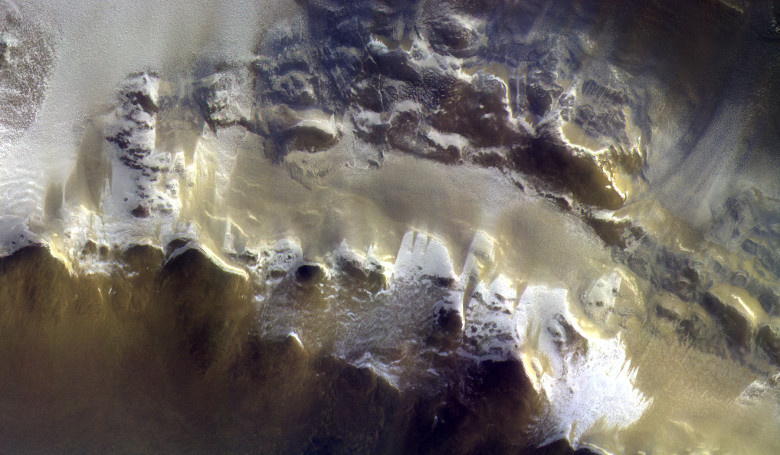Stunning images that capture surface features of Mars have been returned by ESA's ExoMars Trace Gas Orbiter (TGO) for the first time since it arrived it its new orbit a few weeks ago.
From its lofty position 400 kilometres (km) about the planet’s surface, the orbiter took this spectacular image of a 40 km-long segment of the Korolev Crater topped with ice, as it tested out its Colour and Stereo Surface Imaging System (CaSSIS) after a long-distance software update.
“We transmitted new software to the instrument at the start of the test phase and after a couple of minor issues, the instrument is in good health and ready to work,” says the camera’s principal investigator, Nicolas Thomas from the University of Bern in Switzerland.
THE TGO is not meandering around the Red Planet simply to take pretty pictures of its surface however, as its main purpose is to sniff out what molecules are present in Mar’s atmosphere.
It will do this with two spectrometer suites – NOMAD (Nadir and Occultation for MArs Discovery) and ACS (Atmospheric Chemistry Suite) – and these instruments have already had their first taste of the martian atmosphere a few days go.
Determining what chemical species are present will take a while though, as the gases the TGO hopes to detect are likely to be found in very small quantities - around less than one percent of the volume of the planet’s atmosphere.
While NOMAD and ACS will do the leg-work when it comes to finding the trace gases, CaSSIS will eventually help characterise features on the surface that may be related to trace gas sources, therefore giving a more rounded view of what processes might be contributing to the gases.
“We are excited to finally be starting collecting data at Mars with this phenomenal spacecraft,” says Håkan Svedhem, ESA’s TGO project scientist. “The test images we have seen so far certainly set the bar high.”
The image is assembled from three images in different colours that were taken almost simultaneously on 15 April and the team hope to fully automate the image production process so that the data can be quickly distributed to the science community for analysis, added Thomas.
 Full CaSSIS image from ExoMars. Image: ESA
Full CaSSIS image from ExoMars. Image: ESA











